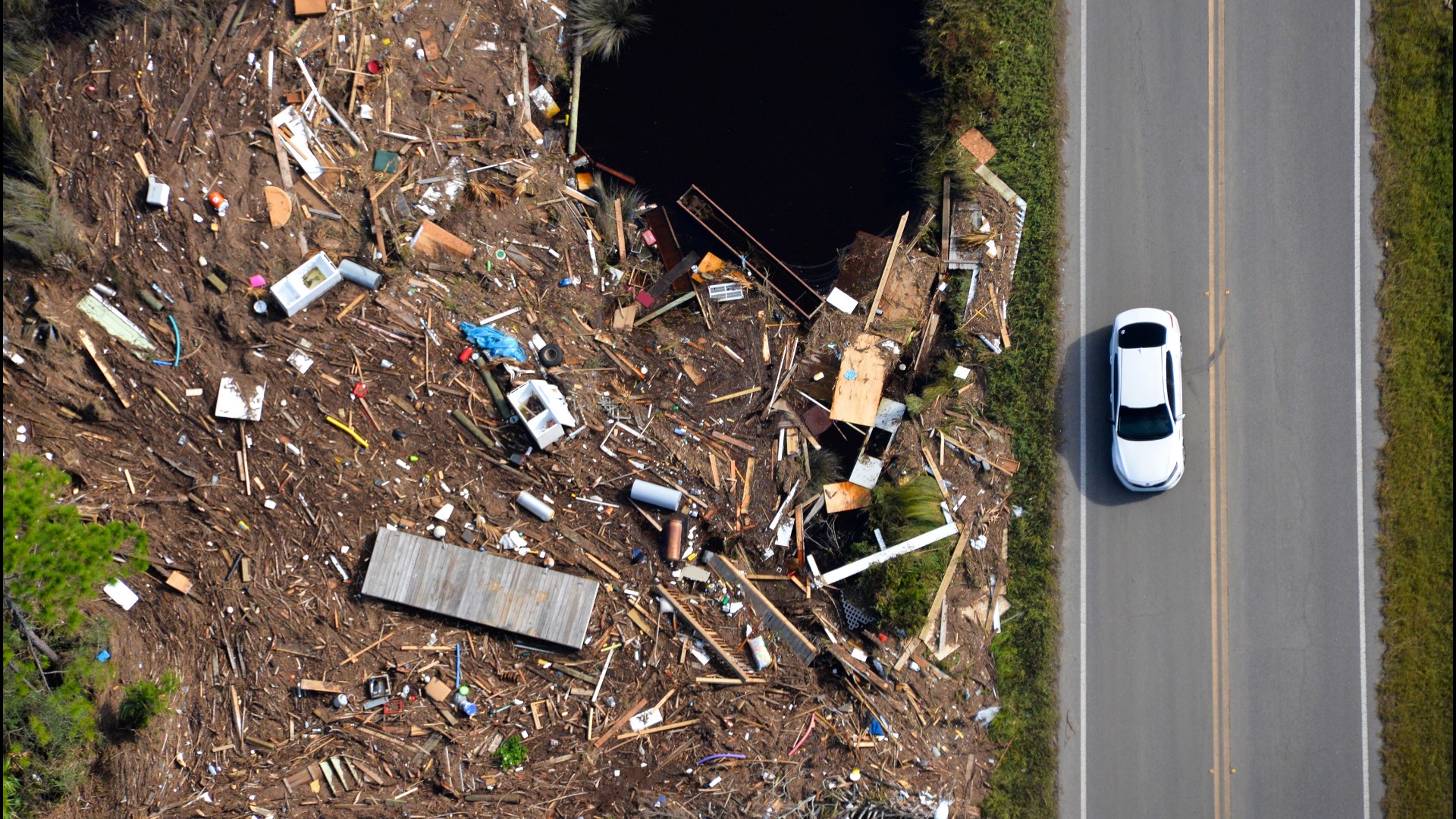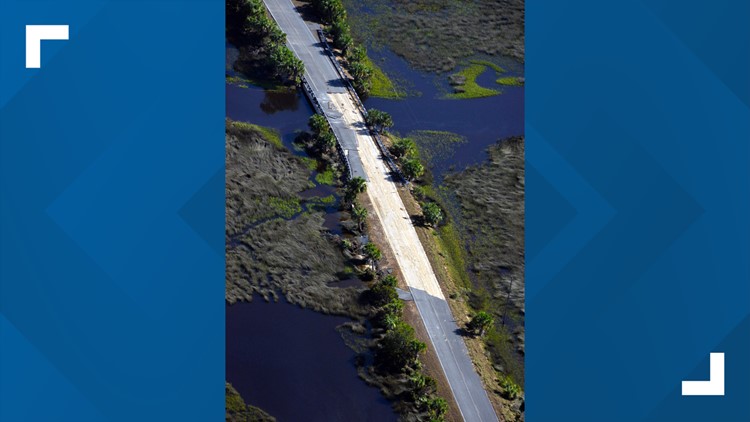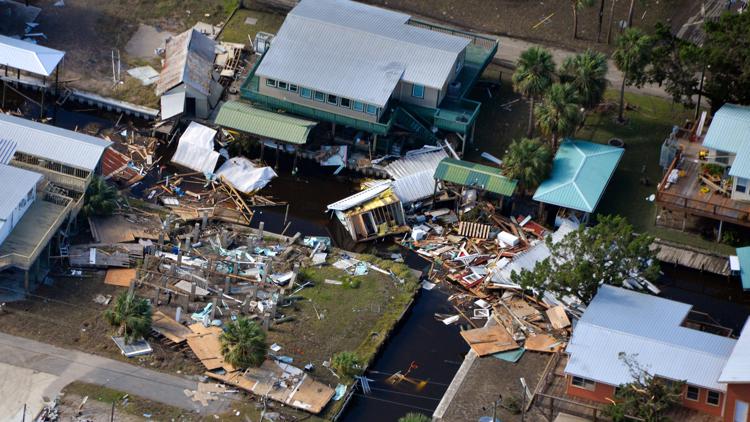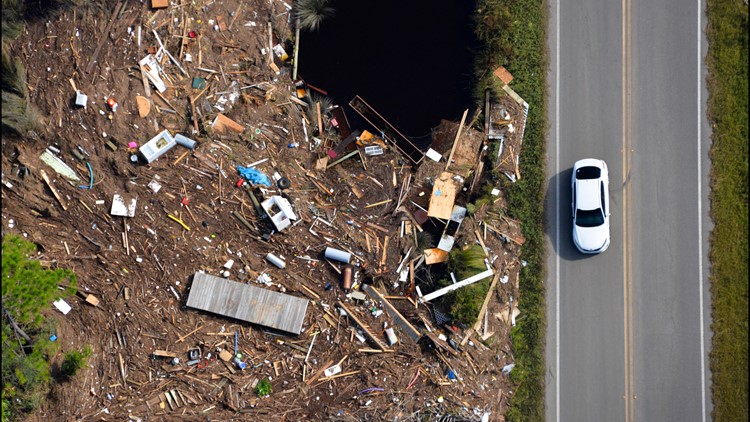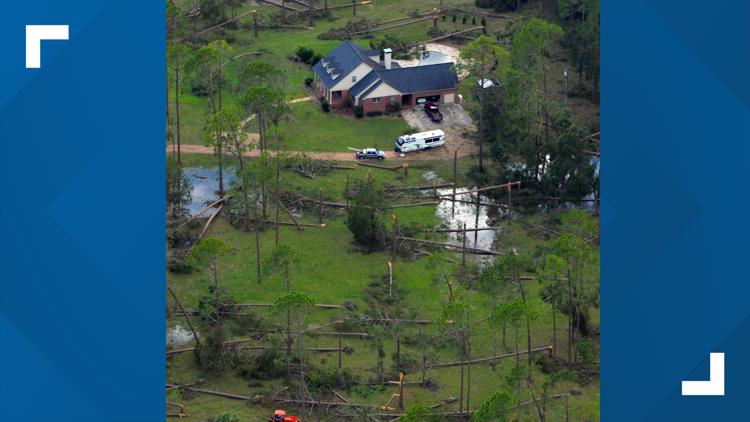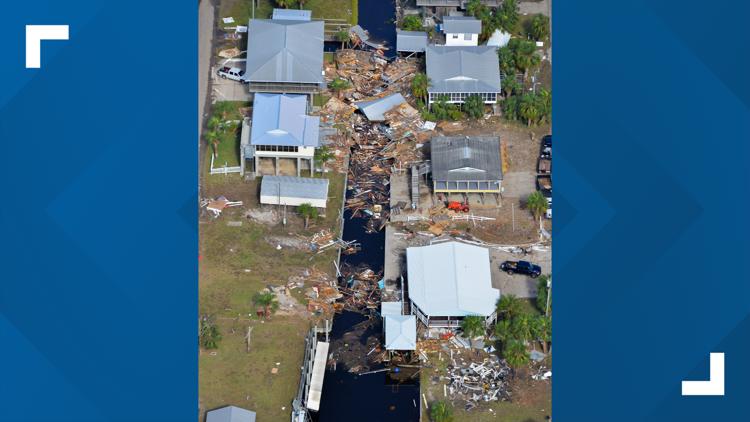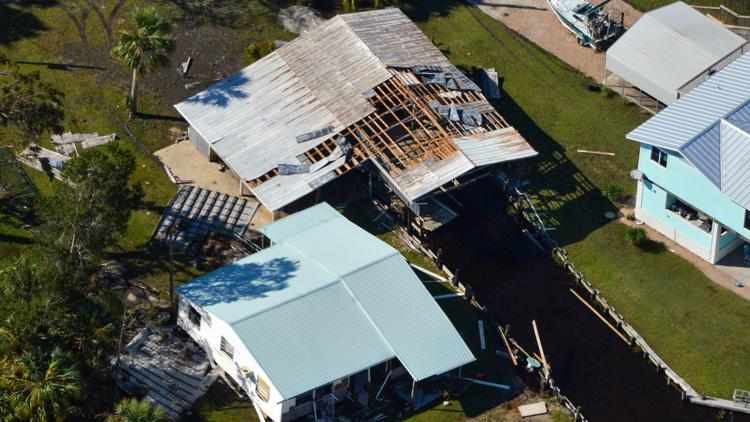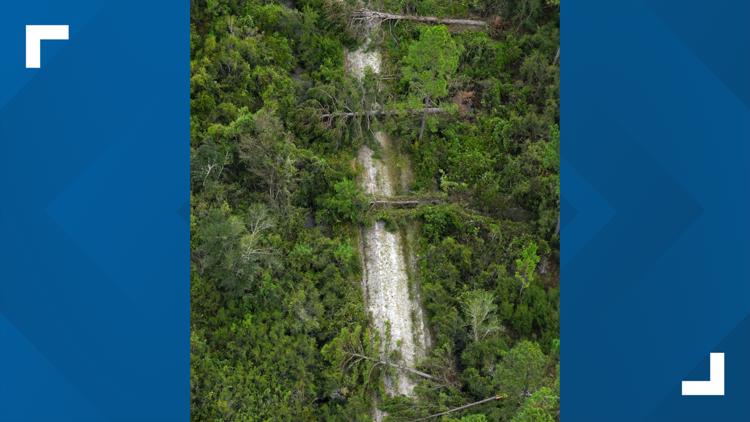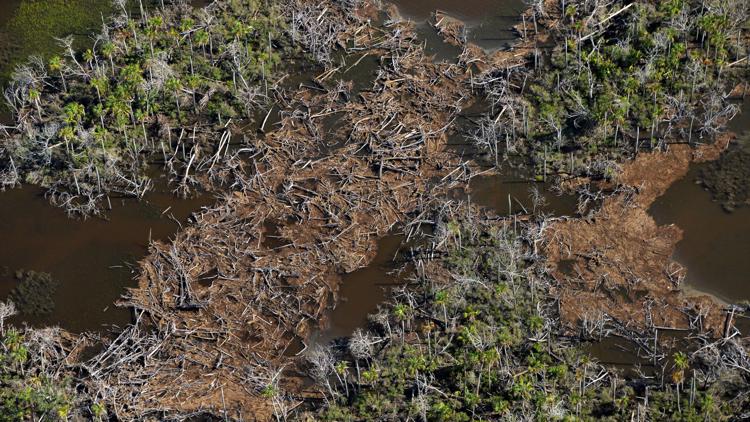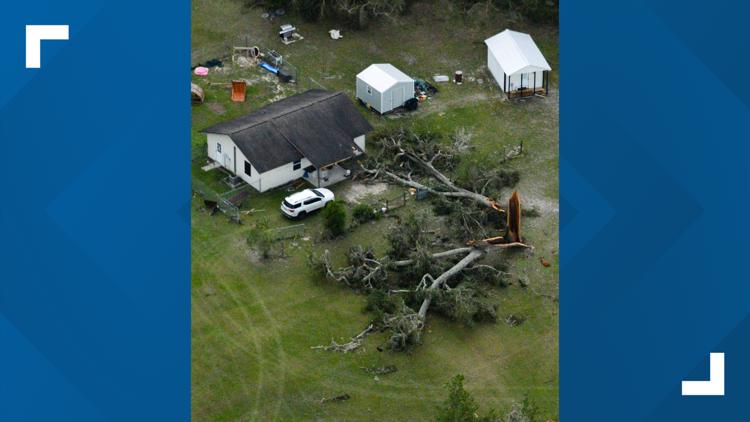STEINHATCHEE, Fla. — From 1,000 feet, Florida’s lush landscape of cedars and oaks were stripped of their greenery and felled as though leveled by war. Some homes and buildings were smashed to their foundations, roofs peeled away from Hurricane Idalia’s 125 mph winds.
An aerial tour of the region in north-central Florida where Idalia made landfall early Wednesday and nearby communities revealed the devastating scale of destruction across Florida’s Big Bend from Cedar Key northwest to Horseshoe Beach to Steinhatchee to Keaton Beach to Perry and nearby Live Oak. Damage stretched over a span more than 100 miles wide.
The survey of damage included many of the same areas that Gov. Ron DeSantis toured Thursday and President Joe Biden was expected to visit Saturday. DeSantis said Friday in Tallahassee that 91,000 people across the area were still without power more than 48 hours after the hurricane struck. Nine distribution centers were set up to distribute food, water, ice or tarps. Private aid groups separately were offering free meals across the area. The governor said details were here.
Only from the air was it possible to gain a fuller perspective of the extraordinary damage the hurricane wrought.
“It’s intriguing to see it from the sky and kind of see a wider perspective of the damage,” the helicopter pilot, Parker Thornley, said Friday. “You don’t get that same perspective from the ground. It was definitely kind of tragic to see how many people’s places were destroyed.”
In Keaton Beach, where the storm made its historic landfall, photographs and video from the air showed a building leveled. Just outside the city, trees were swept in multiple different directions, barren or horizontal. In places, the hurricane was selective: On just one street, one home was destroyed, a neighboring one mostly intact.
On Horseshoe Beach, in Dixie County west of Gainesville, a building’s roof was peeled away and tossed hundreds of feet away from any nearby structure. Almost every building was still surrounded by debris. In Steinhatchee, docks were blown asunder in the water, some partially submerged. Trees surrounding Cedar Key were snapped in half, like twigs.
Lines of debris swept into the Suwannee River and its inlets were being carried out to the Gulf. Along the edges of the river, homes and buildings were destroyed. More roofs collapsed or were ripped off.
The helicopter tour was conducted Thursday evening by Fresh Take Florida, a news service that produces news articles, photos and video by undergraduate students at the University of Florida College of Journalism and Communications.
Aerial tour of Hurricane Idalia's aftermath
Idalia devastated coastal communities with its storm surge, but the wind did no favor to those further from the waterfront.
Near Perry, where many residents still did not have electricity on Friday, rural or dirt roads were blocked by downed trees or made dangerous by downed power lines. There were few buildings that survived. Many suffered catastrophic roof or structural damage. In one area, building debris was piled high into a garbage dump.
In Live Oak, massive farm buildings in the area did not withstand the storm, blowing away entirely or crumpling where they once stood. Towering trees were split in half at their trunks, if not torn up from their roots. Low-lying fields remained underwater.
Repairs were underway. Cars were in the driveways of destroyed homes and trickled back into ravaged coastal towns. Some roofs already were covered in blue tarps to protect the homes from further rain. Smoke curled in columns across Florida’s horizon – burn piles, where residents were disposing of debris from the storm’s fury.

